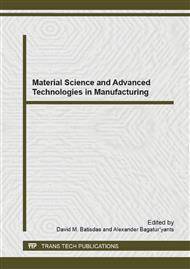p.27
p.32
p.36
p.40
p.44
p.51
p.56
p.61
p.66
Effect of Aluminium Powder Additives upon CO2 Reactivity of Electrolytic Aluminium Carbon Anode with Calcined Anthracite
Abstract:
Charcoal slag that falls away from electrolytic aluminium carbon anode caused by selective oxygenization is recognizad as the principal factor of carbon anode excessive consumption in electrolyzation. In this paper, effect of aluminium powder upon calcined anthracite carbon anode CO2 reactivity at 970°C was tested and measured to reduce carbon consumption. The result indicates that aluminium powder added to calcined anthracite carbon anode effectively reduced the CO2 reactivity at 970°C. The experiment shows that the oxidizing level and deciduous level of carbon anode with 0.8wt.% aluminium powder additives is the lowest, which is 32.8% and 70% lower than that without additives individually, and the total consumption rate reduces to 39.28 mg·cm-2·h-1. It is considered that the inoxidizability increases with advancing the cokeability, increasing the graphitization degree and reducing the porosity of carbon anode through aluminium volume increasing and pitch thermolysis catalyzing in calcination.
Info:
Periodical:
Pages:
44-50
Citation:
Online since:
January 2014
Authors:
Price:
Сopyright:
© 2014 Trans Tech Publications Ltd. All Rights Reserved
Share:
Citation:


